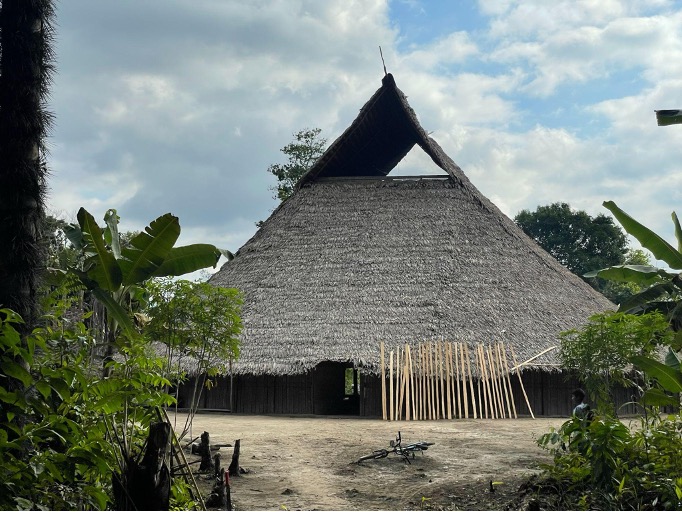Madre Maestras: Learning through the eyes of female leaders
By Miriam Alrahil

From my last ride back from San Antonio--a bittersweet way to say goodbye to such a wonderful experience.
When starting this project, my main goal was to document the institutionally ignored perspectives of Indigenous peoples, most particularly in this case within the Amazonian region. I did not enter with the pursuit to focus on the female perspective, yet in my time here “femininity” ended up having a profound impact and involvement in the experiences I was having and information I was gathering. My work still remains inclusive, garnering male and female voices for the oral history project, however I ended up weaving together a strong network of female leaders, especially teachers (maestras) from whom I learned so much about the progression of both climate change and female empowerment within the area. Chance brought me to the doorstep of these active, powerful, and insightful women, but choice caused for a new type of exploration to be undertaken by my documentary.

Me with Raquel (left) and Angela (middle) -- two women from the community of San Antonio de los Lagos, whom I interviewed for the documentary. I had worked in this community for two months volunteering in workshops.

Me with the community of San Antonio after my last workshop--I am so grateful to have the privilege of being allowed to participate in their community activities (Professor Ligia on the far right is also included with the documentary!)
The results of this project opens the doors to not only see the impact of implementation of the Indigenous cosmovision on climate change, but also the relationship between female empowerment and preserving biodiversity and the environment as a whole. This project made me reflect on the different aspects of what “preserving the Amazon '' truly meant, as from an outside perspective it is easy to generalize what is the multi-faceted, nuanced nature of environmental conversation. From the river to the jungle to lakes to Indigenous bioculturality, these are all facets of what construes “preserving the Amazon.” It is not just about the “trees” as my field advisor Sonia Sofia Romero Cordero told me, but about preserving different species of birds, protecting populations of fish, and educating future generations using (indigenous) culturally conscious pedagogy – all in which people of the local communities inhabit specific roles and focuses.

Sofi (left), me, and Profesora Emilce right)--also featured in the documentary as the first Yukuna woman aimed to get a doctorate degree! I had just finished a meeting with Emilce over her current work in environmental education in the community.
I hope that my research can serve as a mode of dual empowerment, providing a platform to uplift both female and indigenous voices, especially to the voices of those who sit at the cross section of these two identities. In fighting against two modes of institutional and societal oppression (patriarchal and racial) the voices of these women and those like them are those that are most actively silenced. I hope to link the gap in what seems to be two disparate fights of social justice, demonstrating the interlaced impact each has on the other and creating more nuanced reflections of how different social problems feed into each other. I want to open a conversation that provides a greater emphasis on collective empowerment and interdisciplinary collaboration in attempting to remedy the two issues. I aim for this project to demonstrate to my fellow researchers in distinct fields that there is greater overall connection and unity within our individual pursuits than we may originally see, emphasizing the need to branch out and diversify our modes of thoughts and interactions.

The Maloca of Emilice's community. The Maloca is the communal home within an indigenous community, used for traditional celebrations, meetings, and other gatherings.
In looking at past documentaries and oral histories done within this area, I noticed a high concentration of male interviewees and the focus on male leadership and perspective. I decided to address these gap within the archival gap I had initially pursued in the intention of diversifying what material was already present in the media. I desire for this project to serve as a mode of empowerment in its own right, demonstrating to Indigenous peoples, particularly Indigenous women, the value and importance their stories, their knowledge, and their work is on a grander scheme. I essentially want this documentary to be a cog in the Indigenous female empowerment machine–demonstrating they can be and are leaders and maintain an extremely impactful and profound role within their communities.

